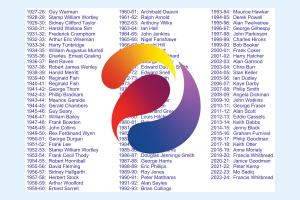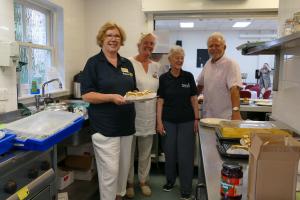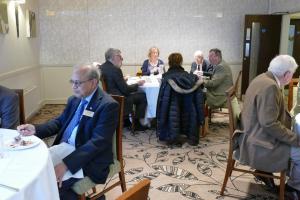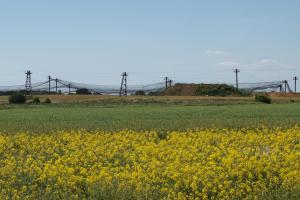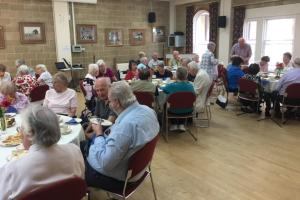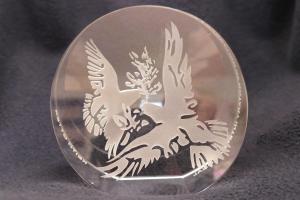Tony Tuckwell: Mary Tudor at New Hall
Thu, Apr 14th 2022 at 12:45 pm - 2:15 pm
Mary Tudor at our local Tudor palace
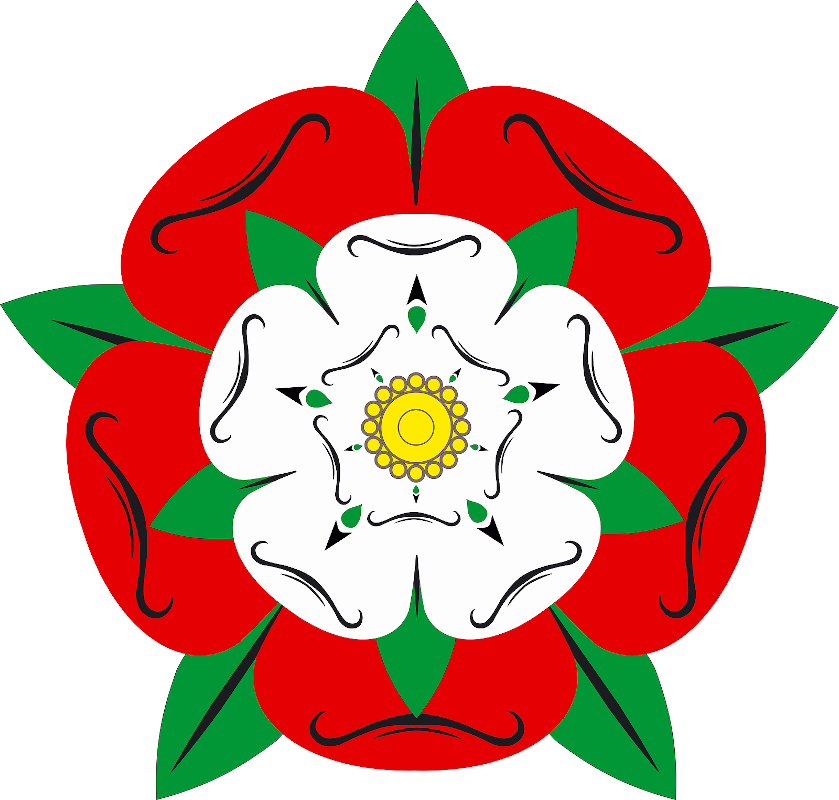
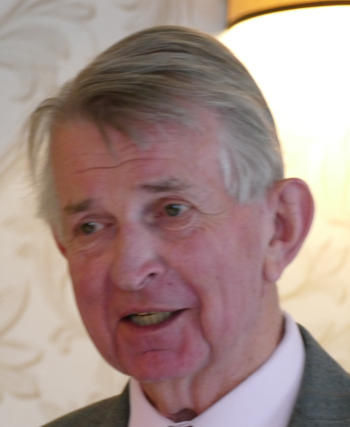 This week’s speaker was Tony Tuckwell, a former headmaster of the King Edward VI Grammar School, who told us about Mary Tudor at New Hall. (He has written a book on New Hall.)
This week’s speaker was Tony Tuckwell, a former headmaster of the King Edward VI Grammar School, who told us about Mary Tudor at New Hall. (He has written a book on New Hall.)
Henry VIII had a palace built at New Hall, to which he gave the name Beaulieu. He intended it as a palace where his then wife, Catherine of Aragon, could get away from London and where the royal court could gather. The east windows in the chapel commemorate both Henry and Catherine. It became the childhood home of their daughter Mary Tudor, known as Princess Mary.
Their marriage was stable for over twenty years until he decided to get rid of her to find a wife capable of bearing him a son and heir. He had their marriage declared invalid and married Anne Boleyn. After their marriage he had Mary declared illegitimate on the grounds that he had never been validly married to her mother. She lost any claim she might have to the English Crown and became known simply as Lady Mary. Mary was later coerced into writing a letter acknowledging her illegitimacy and Henry’s claim to be the Head of the Church in England.
Mary took up residence again at Beaulieu, which had lost its status as a palace, reverted to its original name as New Hall, been damaged in a fire and was in need of repair. Having been declared illegitimate, she had lost any claim she might have to the English Crown and became known simply as Lady Mary. Even the badges on the livery of her personal staff were changed to bear Henry’s new emblem of an intertwined H and A, reflecting his marriage to the woman who had replaced Mary’s mother as his wife. Mary was later coerced into writing a letter acknowledging her illegitimacy and Henry’s claim to be the Head of the Church in England.
She lived quietly at New Hall, attending Catholic Mass in the Chapel even though this was now forbidden. Henry and Anne Boleyn had a daughter, Elizabeth.
Jane Seymour, who replaced Anne Boleyn as Henry VIII’s wife, was sympathetic to Mary and persuaded Henry to restore her title of Princess but not her claim to the throne. When he was born her son Edward became heir to throne.
Henry’s last wife, Catherine Parr, persuaded him to restore Mary’s position as a potential heir to the throne. She could not become the heir because Edward was the heir as Henry’s only son.
On Henry’s death Edward, then only nine years old, ascended the throne as Edward VI. He was just as ardent a Protestant as Mary was a Catholic. A small group of local nobles visited Mary at New Hall in an effort to persuade her to stop arranging for the Catholic Mass to be held there. In the end they agreed a compromise with her whereby she would continue to attend Catholic Mass but only in private. In practice she continued arranging for Catholic Masses to be held at New Hall and invited others to attend.
She was in correspondence with her cousin, Emperor Charles V of the Holy Roman Empire, the most powerful monarch in Europe. She hatched a plan to flee to his court. He advised her against it, pointing out the dire consequences if she was caught en route and that, even if she did successfully reach his court, she would lose her claim to the English throne.
Lord Robert Dudley was determined that Mary should never ascend the throne and married his son, Lord Guildford Dudley, to Lady Jane Grey, who was the granddaughter of Henry’s sister and then aged only 15, with a view to putting her on the throne should Edward die.
Mary did decide to try to escape to Charles V’s court. England imported grain from the continent and it was arranged that Charles would send two warships with the grain ships, ostensibly to protect them against pirates in the North Sea. Mary, accompanied by two ladies-in-waiting, all dressed simply in black, would walk the eight miles from New Hall to an ally’s house in Woodham Walter. A Monsieur Dubois would sail over to Maldon with the grain ships and then walk to Woodham Walter himself. There he would meet up with Mary and her ladies-in-waiting and walk with them back to grain ships.
Mary walked to Woodham Walter but was undecided because one of her advisers was urging her not to go in order to avoid losing her claim to the throne. She asked M Dubois to return just over a month later, even though it would look suspicious to send ships again as the grain had already been delivered.
She duly met him at Woodham Walter again but told him she had decided to remain in England.
Edward VI died of TB five years later. Lord Robert Dudley duly had Lady Jane Grey declared Queen and marched to Norfolk with an army to arrest Mary at her residence there.
He had misread the times. The bulk of the army considered Mary to be the rightful Queen and had melted away before he could arrest her. She made her way back towards London as Queen Mary I and stayed briefly at New Hall, where her royal court met for the first time. It was to be her last visit.
